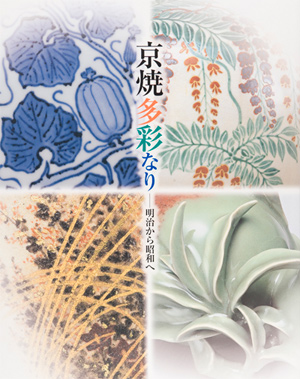| image | information |
|---|---|
 |
Among the Japanese ceramics, Kyoyaki is popular for its brilliant designs and delicate painting. From the early to middle Edo period, master craftsmen with marked individuality such as Nonomura Ninsei and Ogata Kenzan appeared, followed by Nin’ami Dohachi and Eiraku Hozen who passed on their techniques to other areas, and the brand image of Kyoyaki as a high quality style with various techniques, to the next generation. This exhibition features the modern to contemporary Kyoyaki works that bloomed with new charm in the Meiji period, succeeding the tradition since the early modern era. The modern Kyoyaki imported new manufacturing techniques from the west, and opened a new field differing from early modern elegant works. At an early stage, the Kyo-satsuma ware with minute painting was mass-produced for export, and improvement in form and design was attempted referring to western ceramics of the same era. However, after searching for their individuality based on the long history of eastern ceramics, they came to investigate the formative beauty that was originally considered ideal in Kyoyaki ware, once again. This can be seen in the works conscious of Chinese and Korean old ceramics, the iroe (overglaze enamels) that Ninsei sublimated, and the okimono (ornamental artifacts) and tocho (ceramic sculpture) created with dexterous formative sense. After World War II, the artists challenged to create contemporary Kyoyaki, balancing the modern style and tradition. In this exhibition, focusing on Seifu Yohei III, Kiyomizu Rokubei V & VI, Kusube Yaichi, and others, we will introduce the many superior works unfolding in a wide variety. We hope it will be an occasion where our visitors will rediscover the new charm of Kyoyaki. |